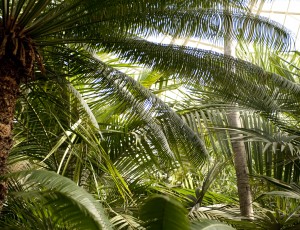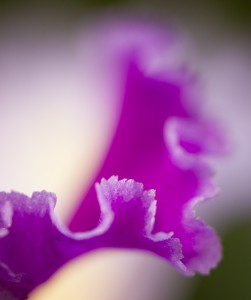Salsa: Listen and Learn
Posted in Around the Garden, Exhibitions, Learning Experiences on February 17 2012, by Matt Newman
 Exploring the Conservatory during Caribbean Garden weekends becomes a study in the music of the islands. While you walk along the paths beneath the palm fronds, see if you can spot the “living instruments” that create the rhythms of salsa, a Caribbean tradition that springs from the very plants growing around you!
Exploring the Conservatory during Caribbean Garden weekends becomes a study in the music of the islands. While you walk along the paths beneath the palm fronds, see if you can spot the “living instruments” that create the rhythms of salsa, a Caribbean tradition that springs from the very plants growing around you!
Drums, or congas, are traditionally made from the wood of the versatile mahogany tree (Swietenia macrophylla). Be on the look-out for a perfect specimen of this warm climate hardwood as you enter our Tropical Rainforest Gallery on a tour of the exhibition.
While you’re there, perhaps you can also find the gourd-bearing trees known as calabash (Crescentia cujete), the fruit of which was once dried and used to create food and water vessels. But cultivators also use it for other purposes, many of them far more creative.
The hollowed fruit of the calabash can be filled with dried seeds and fitted with a handle to be shaken as a rattle or maraca, a familiar sound to fans of classic island dance numbers. And further proving its usefulness, dried calabash is often formed into güiros–percussion instruments that are notched and scraped to produce a unique rasp. Folklorists use comb-like implements or even modern-day plastic chopsticks to get just the right sound!
 Another instrument that is commonly used in salsa is the cuatro, a violin-shaped guitar. The top portion can be made from yagrumo, or pumpwood (Cecropia peltata). The body is then traditionally formed from a tree known as guaraguao (Guarea grandifolia). Its trademark sound has been a part of Puerto Rican music for what experts believe is a stretch of at least 400 years!
Another instrument that is commonly used in salsa is the cuatro, a violin-shaped guitar. The top portion can be made from yagrumo, or pumpwood (Cecropia peltata). The body is then traditionally formed from a tree known as guaraguao (Guarea grandifolia). Its trademark sound has been a part of Puerto Rican music for what experts believe is a stretch of at least 400 years!
Take a vacation and join us each Saturday in February for Salsa: Listen and Learn with educator Jose Obando, the nation’s only museologist dedicated to teaching and preserving the history of salsa. Along with his extensive knowledge, he brings a collection of musical memorabilia and traditional instruments to help tell the history of this beloved Caribbean tradition. Before its over, you’ll also warm up and learn a few dance steps for yourself!
There are only two more chances to catch our salsa workshops before the Caribbean Garden disappears for another year. Be sure to pick up a ticket to the exhibition and join us on Saturday to take part! Classes meet at 2 p.m. on Saturdays in the Enid A. Haupt Conservatory Green School.


Very informative!!